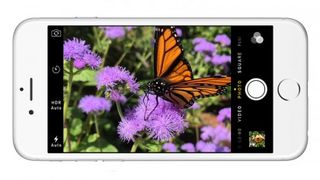What the iPhone 6S camera could mean for photographers
Apple built its reputation on image quality, not megapixels

As always, Apple is giving nothing away in advance of the launch of the new iPhone 6S.
But all the rumors so far point toward two key new features for photographers in the iPhone 6S and 6S Plus: a new 12-megapixel (MP) sensor and 4K video recording capability.
iPhone 6S sensor
Just 12MP doesn't sound much of an increase when the Sony Xperia Z5 camera packs 23 million pixels and the LG G4 has 16MP. But, like the song says, it ain't what you do, it's the way that you do it.
There is a very specific problem with cramming lots of pixels on to a sensor small enough to fit in a smartphone. More pixels means smaller photosites (the individual light receptors).
Small photosites are less sensitive and more prone to noise and it's pretty obvious from the compact camera market that there comes a tipping point where the theoretical resolution goes up but the all-round picture quality goes down. You get more data points, but worse data.

The current iPhone camera might have just 8 million pixels, but it's popular with photographers because, despite its modest resolution compared to rival smartphones, it punches well above its weight for picture quality. Its images are bright, contrasty and sharp from edge to edge, and the chromatic aberration (color fringing) that's the curse of cheap cameras is absent – either because the iPhone lens is particularly good, or because it's processed out by the software.
And the thing is that, while an 8MP sensor doesn't sound much, it wasn't that long ago that 8MP was pretty solid for a mid-range DSLR. To put this in perspective, a good quality, full-bleed 300dpi photographic print needs about 9 megapixels, and a full-bleed image in a magazine needs rather less.
Get daily insight, inspiration and deals in your inbox
Get the hottest deals available in your inbox plus news, reviews, opinion, analysis and more from the TechRadar team.
If you just look at the numbers, a hike in resolution from 8 megapixels to 12 sounds like too little too late. But if it increases the resolution of the images by 50% without any loss in sensitivity or extra noise, then it will make a lot of photographers very happy.

iPhone 6S 4K video
This is the other rumor, that the maximum resolution of the iPhone 6S movie mode will jump from 1,920 x 1,080 full HD in the current iPhone 6 to 4K resolution – possibly 3,840 x 2,160.
In principle, this is a Good Thing, but a lot depends on how well the iPhone's hardware copes with the extra workload.
For a start, if the iPhone can't shoot 4K at 30 frames per second, then it's not worth having. Nikon took a risk with its Nikon 1 J5 compact system by headlining its 4K video capability, even though it can only do this at a jerky 15 frames per second – but it seems unlikely Apple would make a similar mistake.
But video quality isn't just about resolution and frame rate – it's about how well the image stabilization works, how well the camera handles movement and how badly it's affected by compression artifacts.
The 1,920 x 1,080 video output on the current iPhone is really good, so any 4K mode would have a tough act to follow.
If the rumors are true, the camera upgrade on the iPhone 6S will be modest and conservative – but the iPhone's reputation as a photographic tool is built in the quality of its results, not the size of the numbers, so that's no bad thing.
- These are the best mirrorless cameras around
Most Popular


